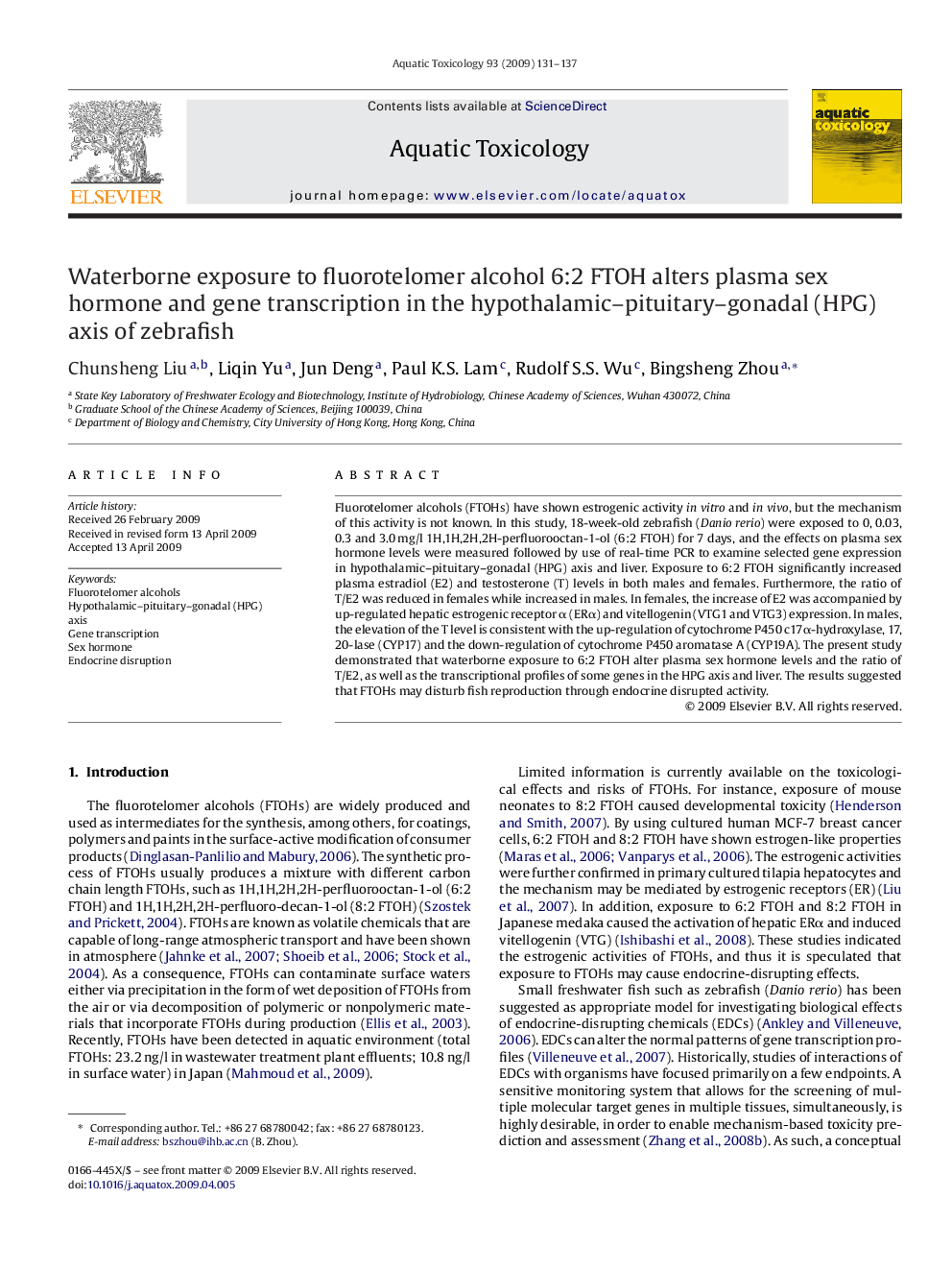| Article ID | Journal | Published Year | Pages | File Type |
|---|---|---|---|---|
| 4530512 | Aquatic Toxicology | 2009 | 7 Pages |
Fluorotelomer alcohols (FTOHs) have shown estrogenic activity in vitro and in vivo, but the mechanism of this activity is not known. In this study, 18-week-old zebrafish (Danio rerio) were exposed to 0, 0.03, 0.3 and 3.0 mg/l 1H,1H,2H,2H-perfluorooctan-1-ol (6:2 FTOH) for 7 days, and the effects on plasma sex hormone levels were measured followed by use of real-time PCR to examine selected gene expression in hypothalamic–pituitary–gonadal (HPG) axis and liver. Exposure to 6:2 FTOH significantly increased plasma estradiol (E2) and testosterone (T) levels in both males and females. Furthermore, the ratio of T/E2 was reduced in females while increased in males. In females, the increase of E2 was accompanied by up-regulated hepatic estrogenic receptor α (ERα) and vitellogenin (VTG1 and VTG3) expression. In males, the elevation of the T level is consistent with the up-regulation of cytochrome P450 c17α-hydroxylase, 17, 20-lase (CYP17) and the down-regulation of cytochrome P450 aromatase A (CYP19A). The present study demonstrated that waterborne exposure to 6:2 FTOH alter plasma sex hormone levels and the ratio of T/E2, as well as the transcriptional profiles of some genes in the HPG axis and liver. The results suggested that FTOHs may disturb fish reproduction through endocrine disrupted activity.
